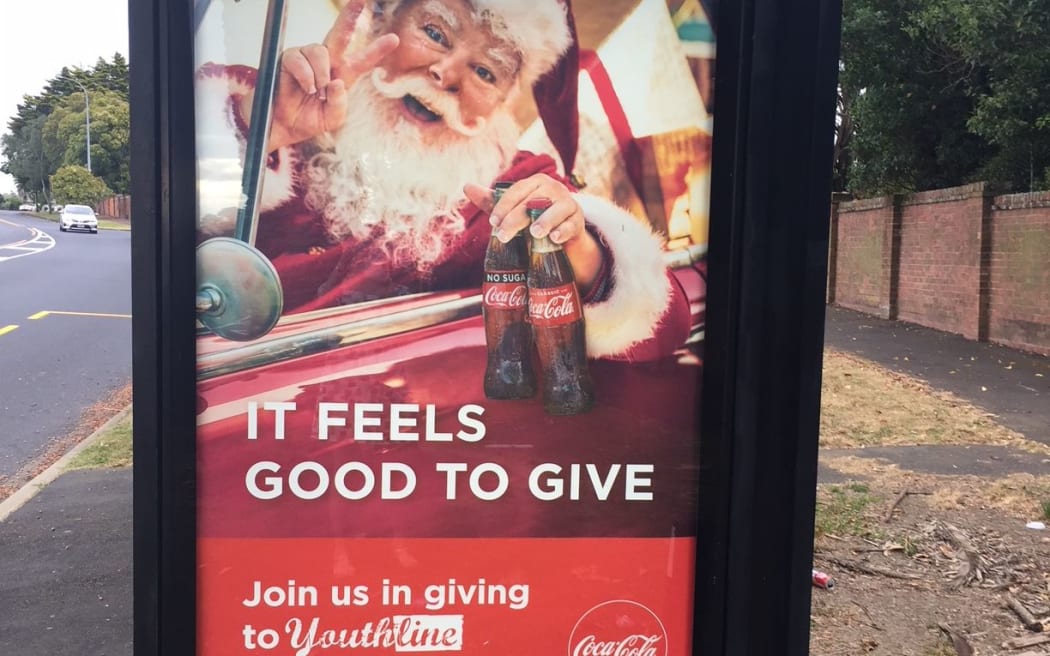Coca-Cola has been rapped over the knuckles by the Advertising Standards Authority for a sponsorship ad featuring Santa Claus holding two bottles of coke.

The ad, displayed here at a bus shelter, has been removed. Photo: Healthy Auckland Together
The ASA ruled that the ad, which ran on bilboards in the build-up to Christmas last year, targeted children with a product which had the potential to cause harm.
The complaint was brought by Healthy Auckland Together, a coalition of health-related organisations, including the district health boards.
They argued Santa shouldn't be used in advertising that promotes unhealthy drinks to children and young people.
Coalition spokesman Michael Hale said the advertising standards codes were revised in 2016 as part of the National government's fight against childhood obesity.
The new code was designed to protect children from advertising for unhealthy food and drinks, Dr Hale said.
A beaming Santa Claus holding two bottles of Coke would lure children towards Coca-Cola, rather than healthier drinks like milk and water.
"When we see ads that target children and are very appealing to children, pushing an unhealthy product, we think that falls foul of the code we want to make sure these things don't continue."
Coca-Cola said that the ad, part of its sponsorship of the Youthline support network, was trying to get people to donate to the charity, and therefore wasn't aimed at children.
It has since removed the ad.
The company has used Santa Claus as part of its marketing since the 1920s.
Coke advertising was a key feature in turning St Nicholas from a rather strict-looking figure, to the fat, jolly red-suited guy we recognise today.
In its written ruling, released yesterday, the Advertising Standards Authority said that although Youthline was a valuable organisation, that didn't let sponsors off the hook in terms of abiding by the "spirit and letter" of the Children and Young People's Advertising codes.
"The power of the code to regulate harmful marketing to children and young people is undermined if it is ignored by advertisers," the decision said.

